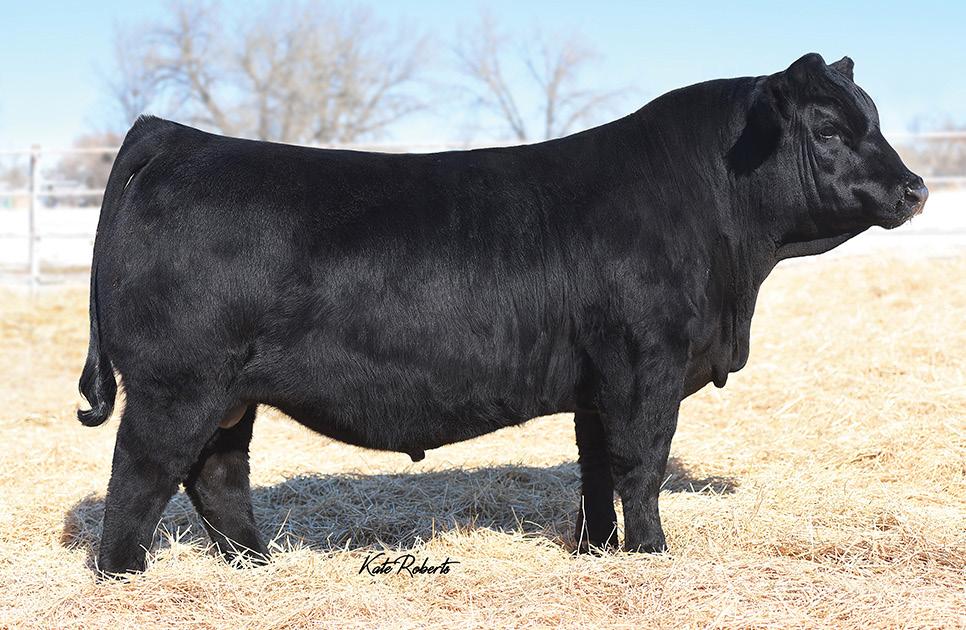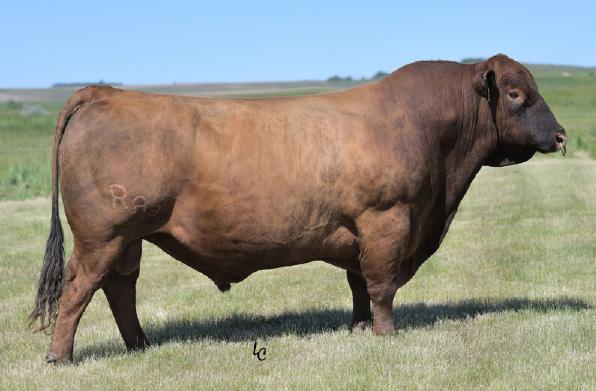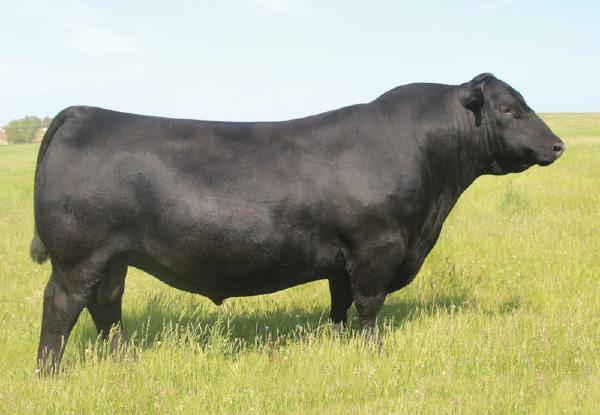
5 minute read
RETAINED INTEREST IN BULLS
OWNERSHIP - We are selling full possession, full salvage value, and 1/2 revenue-sharing interest in every bull in this sale. This means the bull is totally in your control in how you want to handle him plus, you get 100% salvage value of the bull. We are retaining 1/2 revenue-sharing semen interest in every bull sold in the sale. This simply gives us the right to half of the semen sales revenue from the bull if at some time in the future, semen sales become a possibility.
If you sell the bull to anyone else, Dickinson Ranch reatins our semen interest. If you wish to buy a bull in this sale and would prefer that we did not retain semen interest please talk with us about it prior to the time of the sale and we will consider selling the bull(s) to you without us retaining an interest and make that agreement in writing prior to the sale. The buyer may elect to purchase as much additional semen interest as you desire by paying the additional pro-rated amount. For example, you can purchase 2/3 or 3/4 semen interest by paying an additional 33% or 50% of the final bid price respectively.
Advertisement
If a buyer is not interested in marketing the semen from a bull then Dickinson Ranch reserves the right to collect a semen bank on the bull at our cost and the buyer’s convenience. So, that semen would be 100% owned by the Dickinson Ranch for our use or marketing.
EXCLUSIVE SEMEN MARKETING RIGHTS - The buyer may elect to purchase exclusive semen marketing rights on any bull in this sale by paying double the final bid price on the bull at the time of the sale. In the event that the buyer elects to purchase exclusive semen marketing rights, then Dickinson Ranch retains the right of first refusal on the purchase of natural service rights of the bull if the orginal buyer decides to sell the natural service rights and or possession of the bull anytime during his lifetime.
REALISTCALLY SPEAKING - It is unlikely that large amounts of semen will be sold from very many bulls. However, the reason we are keeping an interest in every bull, is that we want to keep it simple and we have great bulls scattered throughout the sale. The bulls that do develope a market from large amounts of semen can be fincially rewarding; therefore, as a breeder we want to share with you in these bulls. Even bulls sold to commercial herds may become popular at a later time, especially if carcass data is collected on their calves. We want to be a great partner with you.
SEMEN RIGHTS - Buyers receive semen rights proportional to the interest purchased. Therefore if you purchase a 1/2 revenue-sharing semen interest then you are entitled to 1/2 of the semen collections at cost provided that you indicate that you want prior to collection. If you choose to collect semen from one of these bulls as an “insurance policy” for your own use, that semen is 100% yours, but before any semen is collected on any bull in this sale, Dickinson Ranch must be notified.
Stay up to date with Dickinson Ranch by joining our text notifications!
TEXT: DickinsonBul
TO: 474747 >






Red Angus




Quick Guide to ASA EPDs and $ Indenex
Expected Progency Differences (EPDs): EPDs are the most accurate and effective tool avaliable for comparing genetic levels. In using EPDs, the difference between two sires’ EPDs represents the unit difference expected in the performance of the progeny. For example, if sire A and B have EPDs of +10 and -5, a 15-unit difference would be expected in their progeny (moving from -5 to +10 yields 15 units). Key to using EPDs is knowing what units they are expressed in. For example, in the above case referred to weaning weight EPDS, sire A would be expected to sire 15-pounds more weaning weight than Sire B. If calving ease were the trait, Sire A would be expected to sure 15-percent more unassisted births in first-calf heifers; in other words, if Sire B sired 30 assists in a group of 100 heifers, we’d expect Sire A to require 15 assists. A percentile-ranking chart is requiredd to determaine where a bull’s EPDs rank him relative to other bulls in the breed. For percentile rankings or more detailed information about EPDs and $ indexes vist www.simmental.org.
Listed below are the units ASA EPDs are expressed in:
• All-Purpose Index (API): Dollars per cow exposed under an all purpose sire scenario. (See below)
• Back Fat (BF): Inches of backfat.
• Birth Weight(BW): Pounds of birth weight.
• Calving Ease (CE): Percent of unassisted births when used on heifers.
• Carcass Weight(CW): Pounds of carcass weight.
• Maternal Calving Ease (MCE): Percent of unassisted births in first-calving daughters.
• Milk (MLK): Pounds od weaning weight due to milk.
• Marbling (MRB): Marbling score.
• Maternal Weaning Weight (MWW): Pounds of weaning weight due to milk and growth
• Ribeye Area (REA): Square inches of ribeye.
• Stayablity (STAY): Percent of daughters remaining in the cowherd at 6 years of age.
• Terminal Index (TI): Dollars per cow exposed under a terminal-sire scenario. (See below for details)
• Weaning Weight (WW): Pounds of weaning weight.
• Yearling Weight (YW): Pounds of yearling weight.
• Yield Grade (YG): Yield grade score.
$ Indexes: Through EPDs allow for the comparision of genetic levels for many economically important traits, they only provide a piece of the econmic puzzle. That’s where $ indexes come in. Through well-onceived, rigorous mathematical compution, $ indexes blend EPDs and economics to estimate an animal’s overall impact on your bottom line. The same technology that led to the dramatic progress in swine, poultry and dairy genetics over the last several decades was used to develop the following $ indexes:
• All-Purpose Index (API): Evaluates sies for use on the entire cow herd (bred to both Angus first-calf heifers and mature cows) with the portion of their daughters required to maintain herd size retained and the remaining heifers and steers put on feed and sold grade and yield.
• Terminal Index (TI): Evaluates sire for use on mature Angus cows with all offspring put on feed and sold grade and yield.
Using API and TI: First, determaine which index to use; if your’re keeping replacements use API, if not, use TI. Then, just as with EPDs, zero in on the unit differences between bulls. (As described above, index units are in dollars per cow exposed.) The difference can be used to determaine how a bull i worth compared to another. Or,, put another wa, how much you can pay for one bull compared to another. For example, when buying an all-purpose-type sire, you can quickly figuree a bull scoring +100 for API is worth an extra $6,000 over a +50 bull if both wered exposed to 30 cows over 4 years ($50 diff. x 30 hd x 4yr. =$6,000). A percentile-ranking chart is required to determaine which bull’s index value rank him relative to other bulls in the breed. For percentile rankings or more detailed information visit www.simmental.org.




